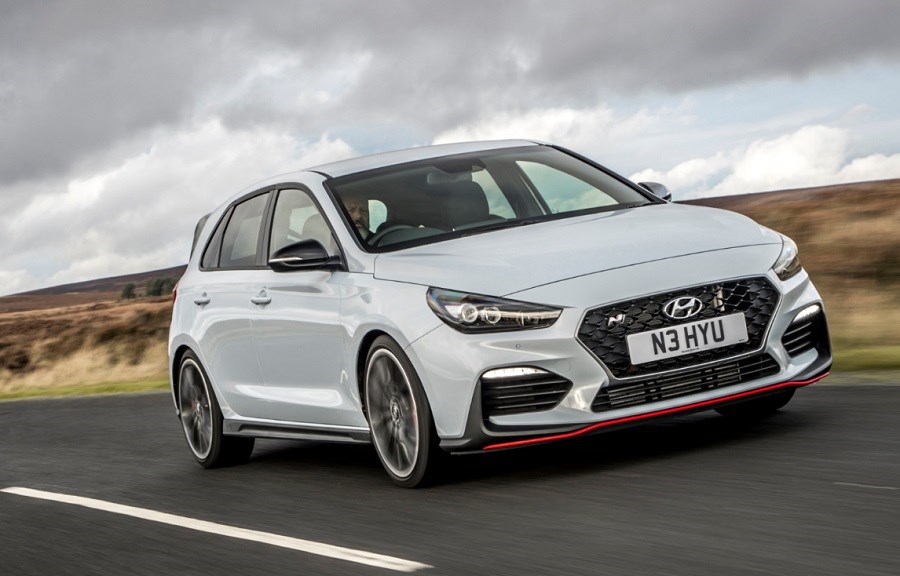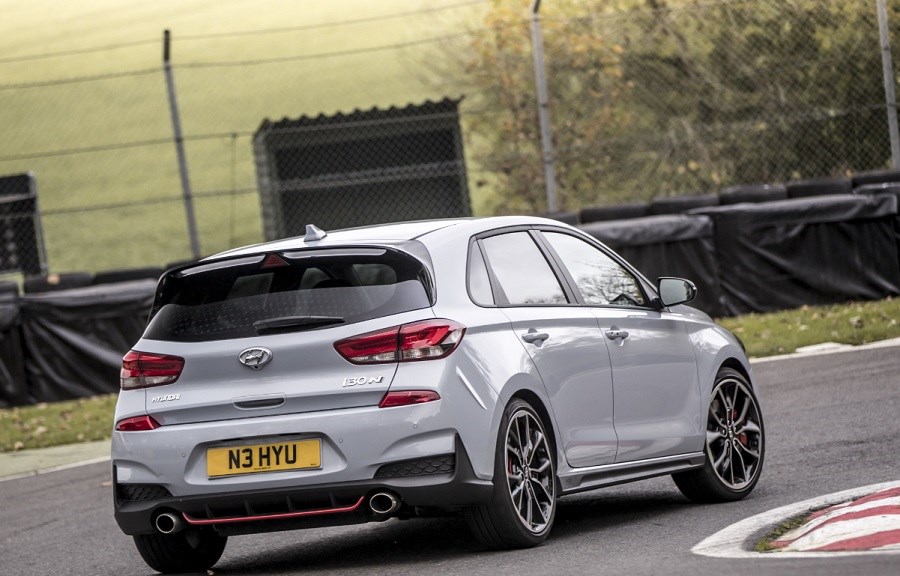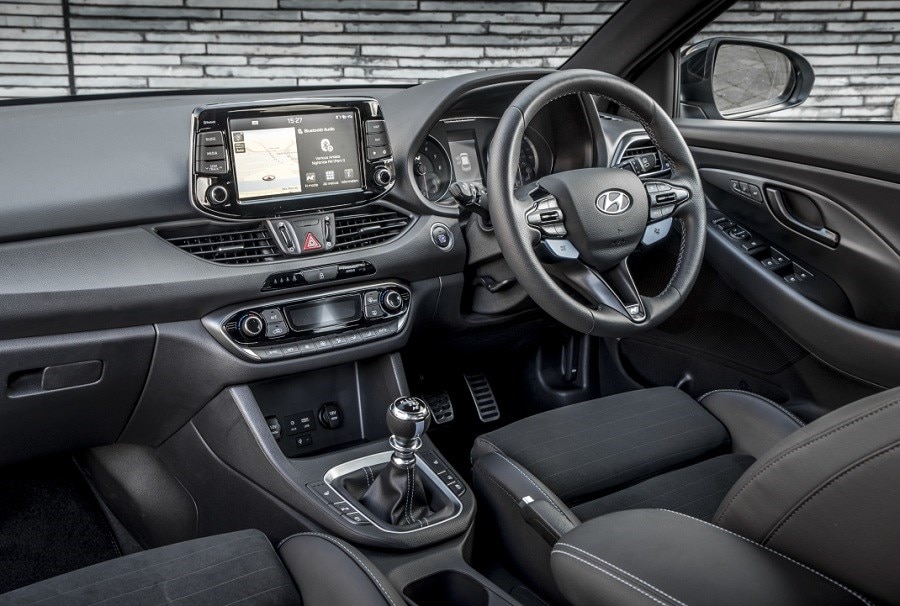Latest model
The i30N is a 2.0-litre turbocharged hot hatchback, with either 247bhp or 271bhp on tap.
The engine is based on the familiar 2.0-turbo GDi unit found in models such as the i40 and Tucson, but don’t mistake it for a standard 2.0-litre unit that has just had its wick turned up, as it’s far more sophisticated than that.
As part of the ‘N-Division’ tuning, the i30N gets a series of selectable drive modes, operated via a thumb-switch on the steering wheel.
This operates the computer-controlled suspension, along with an electronic limited-slip differential, variable-valve exhaust timing, torque vectoring and launch control.
Still not convinced? How about if we told you that the vast majority of the i30N’s chassis development took place at the legendary Nurburgring circuit in Germany, or that the hot hatch could sprint from 0-60mph in just 5.9 seconds?
Yes, this is a genuine hot hatch.
Value for money
There are yet more bonuses, as the £25,760 i30N undercuts the VW Golf GTi by more than £2,000 and the Honda Civic Type R by over £5,000. Yet it isn’t outshone by either of them although it is equally as good, but cheaper — what’s not to like?
The i30N is inarguably one of the best value performance cars on the market today and used values have remained high from the model, something not often observed from Hyundais.
Looks and image
Whilst Hyundai is hardly an iconic name in performance car circles, the i30N is a car that deserves to change that. So, while the Hyundai doesn’t quite have the keyring factor of a Golf GTi or Civic Type R, it won’t be long (we don’t think) until Hyundai N Division becomes a thing of its own, not least because there are so many other models in the company’s range that are ripe for development.
So how about the looks? Well, the i30N is a sharp-looking car, and while performance car purists may turn their noses up at the Hyundai badge, there’s absolutely nothing wrong with the car’s handsome body.
The performance mods are subtle yet effective, with a deep front splitter, mesh grille and subtle ‘N’ badging, along with a subtle red chin stripe and matching brake callipers.
At the back, the rear bumper also has a thin red stripe, along with twin exhaust pipes and a rear diffuser. It’s not an ‘in-your-face’ package like the Honda Civic Type R, but in many ways the i30N is all the better for it.





